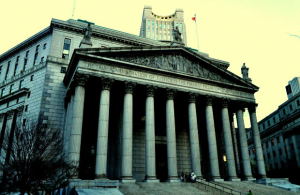By Mickey Herman
On Thursday, March 30, 2017, the Fourth Circuit issued a published opinion in LVNV Funding, LLC v. Harling, a bankruptcy case. Creditor-appellant, LVNV Funding, LLC (“LVNV”) appealed the bankruptcy court’s decision to sustain Rhodes’ and the Harling’s (collectively “Debtors”) objections to LVNV’s unsecured claims, which were raised after the confirmation date. After rejecting LVNV’s argument that such objections were precluded by the doctrine of res judicata, the Fourth Circuit affirmed the bankruptcy’s judgments.
Facts & Procedural History
In July 2014, Jeffrey Rhodes filed for bankruptcy relief under Chapter 13. Rhodes’ Chapter 13 plan was confirmed in October 2014. In June 2015, Derek and Teresa Harling similarly filed for relief under Chapter 13. Their plan was confirmed in August 2015. The Debtors’ Chapter 13 plans both “provided for treatment of unsecured creditors as a single class,” the members of which would be paid pro rata to the extent that funds remained after payment of all other claims. They also reserved to the Debtors the right to object to claims after plan confirmation.
LVNV filed proofs of claim in each case before the plans were confirmed, and neither the Debtors, nor their trustees, acted on the claims before their plans’ respective confirmations. Following their plans’ confirmations, the Debtors—relying on the reservation of rights clauses—objected to LVNV’s proof of claims, arguing that they were barred by the statute of limitations. Although LVNV conceded that its claims would ordinarily be so barred, it characterized the confirmation orders as final judgments and argued that the Debtors’ objections were precluded under the doctrine of res judicata. The bankruptcy courts disagreed with LVNV and sustained the Debtors’ objections. LVNV appealed, and the Fourth Circuit consolidated the Debtors’ cases.
Analysis
The court began by summarizing the role of res judicata in bankruptcy cases. Because “[a] debtor’s bankruptcy case ‘involves an aggregation of individual controversies,’” the court emphasized that it “may contain many ‘final decisions’ that do not necessarily fit squarely into the conventional formulation of res judicata.” Still, the court emphasized, confirmation orders “have a preclusive effect on those issues litigated at confirmation.” Resolution of the issue, therefore, required the court to consider what issues were determined by the confirmation orders and whether the courts “adjudicate[d] the merits of any individual unsecured creditor’s claim.”
The court first addressed the statutory structure of the Bankruptcy Code. After summarizing the distinctions between treatment of unsecured and secured claims, it emphasized that “[n]o provision of the . . . Code provides for the determination of the merits of an individual unsecured claim within the class of unsecured claims as part of plan confirmation.”
It turned next to the question of whether the elements of res judicata were met in the instant case. “Res judicata applies where three conditions are met: (1) there is a prior judgment, which was final, on the merits, ‘and rendered by a court of competent jurisdiction in accordance with the requirements of due process’; (2) the parties to the second matter are identical to, or in privity with, the parties in the first action; and (3) ‘the claims in the second matter are based upon the same cause of action involved in the earlier proceeding.’” Noting that both parties agree that the confirmation orders constitute final judgments “as to their subject matter” and that the parties were before the court when such confirmations were ordered, the court concluded that the first two elements of the doctrine were met.
The court concluded its analysis by considering “whether the ‘cause of action’ in the later proceeding—the validity of the Debtors’ objections to LVNV’s claims—was any part of the cause of action in the first proceeding, plan confirmation.” Ultimately, the court determined that the causes of action differed in that while the Debtors’ objections focused on LVNV’s claims, the plan confirmations only considered unsecured creditors as a class. This result is necessitated by the structure of the Bankruptcy Code, in which “Congress had made Chapter 13 plan confirmation and claim-allowance on contested unsecured claims to be separate and distinct actions within a . . . proceeding.”
Conclusion
Rejecting the contention that plan confirmation constitutes a final judgment as to an individual unsecured creditors claim, the Fourth Circuit affirmed, holding that the Debtors’ objections to LVNV’s claims were not barred by the doctrine of res judicata.




